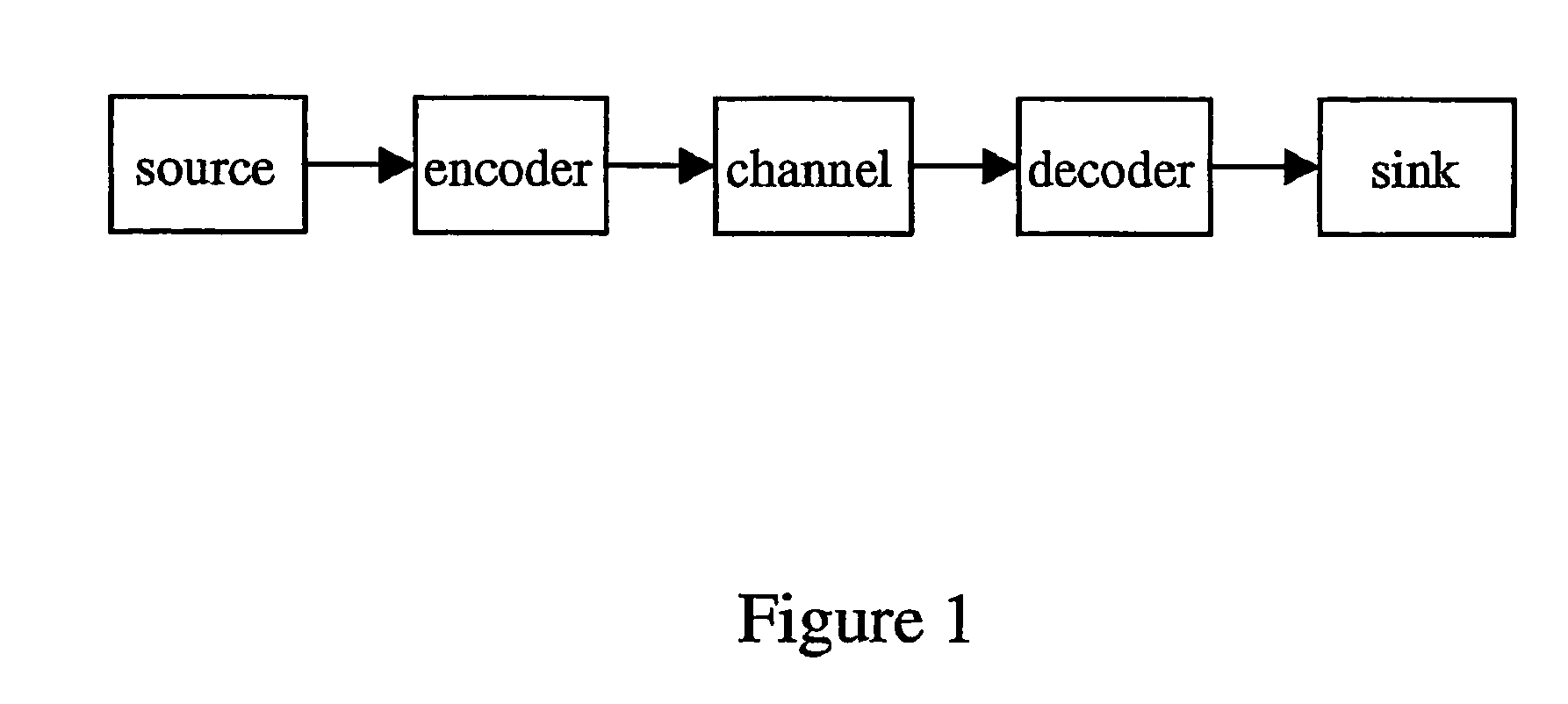Forward error correction coding
a forward error correction and error correction technology, applied in the field of forward error correction (fec) coding, can solve the problems of increasing the requirements for optical and electrical components as well as transmission impairments, affecting the accuracy of coding, and the complexity of decoding should be as low as possible, so as to achieve the effect of increasing overhead
- Summary
- Abstract
- Description
- Claims
- Application Information
AI Technical Summary
Benefits of technology
Problems solved by technology
Method used
Image
Examples
Embodiment Construction
[0032]As discussed concatenated codes were first proposed by Forney [D. Forney, Concatenated Codes, MIT Press, Cambridge, 1966]. Code concatenation allows long codes to be built from comparatively shorter component codes, and allows efficient decoding via the component codes. A generalised version of code concatenation (hereinafter termed GC codes) was introduced by Blokh and Zyablov [V. Blokh, V. Zyablov, “Coding of generalised concatenated codes,” Problems of Information Transmission, Volume 10 (1974), pp. 218-222]. In the following description of the coding scheme of the invention generalised concatenation is described as a sum of concatenated codes.
[0033]The addition of two code words of equal length, and over the same field, is done by adding the code vectors symbol by symbol The addition of two codes B1 and B2 is given as the addition of all possible pairs of code words with one code word from each code B1⊕B2={b1⊕b2|b1εB1, b2εB2}. If two linear codes have no common code word (...
PUM
 Login to View More
Login to View More Abstract
Description
Claims
Application Information
 Login to View More
Login to View More - R&D
- Intellectual Property
- Life Sciences
- Materials
- Tech Scout
- Unparalleled Data Quality
- Higher Quality Content
- 60% Fewer Hallucinations
Browse by: Latest US Patents, China's latest patents, Technical Efficacy Thesaurus, Application Domain, Technology Topic, Popular Technical Reports.
© 2025 PatSnap. All rights reserved.Legal|Privacy policy|Modern Slavery Act Transparency Statement|Sitemap|About US| Contact US: help@patsnap.com



